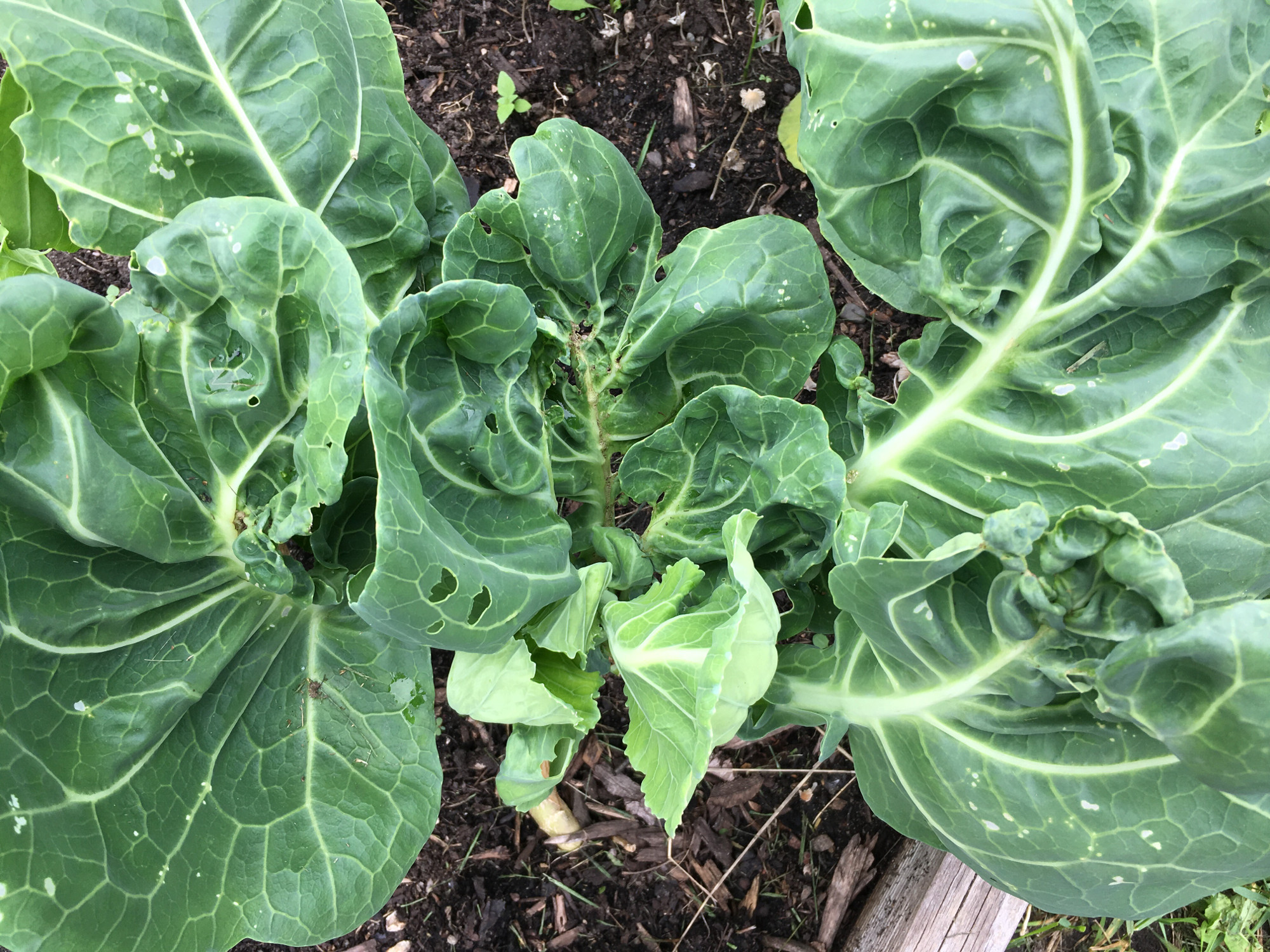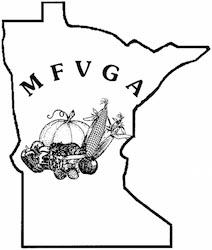
Introduction
Pest and disease symptoms can vary greatly. Symptom expression for your particular crop may not match those demonstrated here. Consult your local extension agent for further assistance. For additional crop disease information, contact the University of Minnesota Crop Disease Clinic at: 612-625-1275.
Additional background information on insect damage, types of plant diseases, preventing problems, and specific pest management methods can be found in the Midwest Vegetable Pest Management Guide or the Midwest Fruit Pest Management Guide.
Insects
Many types of insects have the potential to damage fruit and vegetable crops. Various grasshoppers, weevils, beetles, and small insects like thrips and certain fly larva can cause significant damage. Among the most common types of detrimental insects are the Lepidoptera (moths and butterflies), and the Homoptera (aphids and leafhoppers). Damage caused by moth larvae often consists of ragged chewed leaf edges or holes in leaves. Homopteran insects like aphids are often difficult to see without a magnifying lens but their damage can be recognized by yellow speckles accompanied by a sticky film on leaf surfaces.
Other insects cause various types of damage including defoliation, or stem and fruit tunnelling. When investigating insect damage look for weak or stunted plants with damaged leaves or fruit. Check the base of the plant near the ground and check the undersides of leaves for insects and insect eggs. Often the best time to spot insects in the process of feeding is at dusk, or in the early morning.
Many insects are beneficial, either for crop pollination, or as predators of nuisance insects. Never use pesticides on an insect you cannot identify, and only use pesticides labelled for that insect.
Diseases
Plant diseases are broadly classified as "Biotic" or "Abiotic." Biotic diseases are those caused by living organisms, like fungi, bacteria, and even viruses. Biotic diseases usually appear on random plants throughout a field and effect different plants with different levels of severity. Often plants have visible signs of disease-like fluffy masses of mold. In general, fungal diseases can often be recognized by visible mold, orange pustules, and round leaf spots. Bacterial diseases are often characterized by wet, or "watersoaked," lesions, or by irregular shaped leaf spots. Viruses often cause irregular color changes like mosaic patterns on leaves, or unusual foliage colors like red leaves. Nematodes, a microscopic worm are also classified as a biotic disease. They often cause root rots, or irregular root growth.
Abiotic diseases are the result of non-living causes like herbicides, pollution, road salt, and too much or too little of certain nutrients that plants require for growth. Abiotic diseases usually appear in a distinct pattern-like only alongside a road, for example and they effect the all plants in the area similarly. Abiotic diseases also often effect other types of plants in the area, including weeds, and other nearby crops. One common symptom of abiotic disease is brown, dead or wilted leaf tips. Another common symptom is the yellowing of older leaves.
Insect and Disease Complexes
Pest and disease problems in plants are often the result of more than one cause. These are called "complexes." For example aphids and leafhoppers often spread various plant diseases in the process of feeding. Or weak plants in nutrient deficient soils (an abiotic condition) are sometimes more susceptible to attack by various diseases and insects. In such cases it is not enough to simply treat a crop with a pesticide or fungicide. Instead all causes of the complex should be addressed.
Preventing Insect and Disease Problems
Many insect and disease problems are preventable by maintaining proper crop health. This includes:
- Use certified seed.
- Choose disease resistant crop varieties.
- Rotate crops frequently-this includes not planting related crops (such as potato and tomato) in the same area in consecutive years.
- Maintain proper soil nutrients (too much fertilizer can be as harmful as too little).
- Irrigate crops properly-overhead irrigation can promote disease; as can planting in poorly drained sites.
- Keep fields free of weeds.
- Practice sanitation-remove crop debris at the end of the season.
- Minimize use of pesticides that can kill beneficial insects.
Identifying Insect and Disease Problems
Information on specific insect and disease problems of some common crops can be found in the Pests - Crop Specific Information section. While the insects and diseases featured in that section are by no means the only ones affecting each crop, they are some of the more common ones in Minnesota. Contact your local Extension office if you encounter problems not addressed on this website.
This site was developed through a partnership with the University of Minnesota Extension Service, the USDA Risk Management Agency, and The Minnesota Fruit and Vegetable Growers Association.
Thanks to Janna Beckerman and William Hutchison for contributing the disease and insect photos respectively, and to Eric Mader for creating the original website.

|

|

|